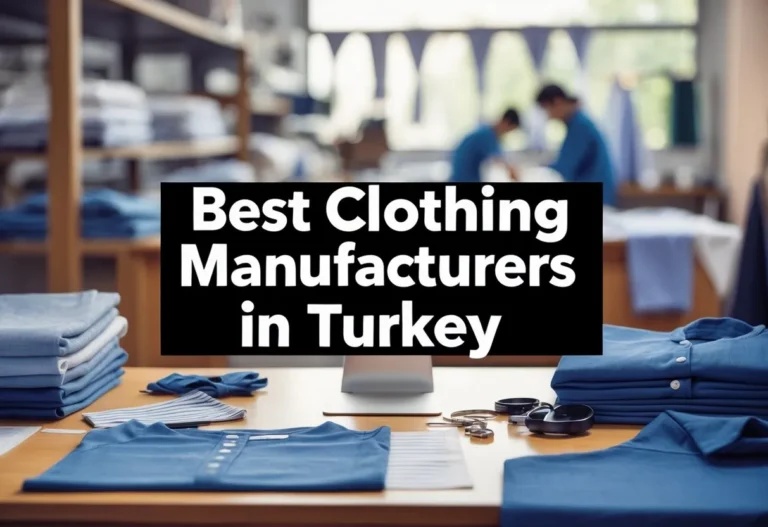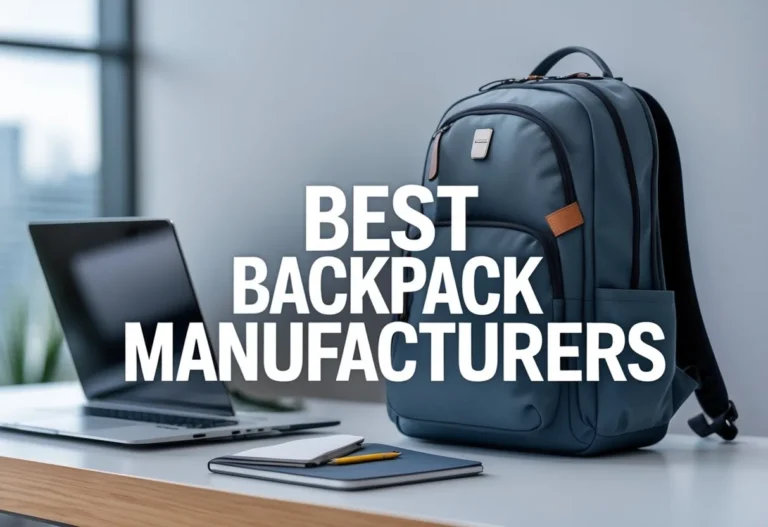How to Create My Own Underwear Line: Step-By-Step Guide
How to Create My Own Underwear Line involves clear planning, smart design, and finding the right manufacturer to bring ideas to life. The key to success is focusing on a specific market niche, designing comfortable and stylish products, and working with experienced producers to ensure quality. This approach helps new brands build strong connections with their customers and stand out in a crowded market.

Marketing and selling the products effectively online supports long-term success. Using social media, influencer partnerships, and good product presentation helps reach the right customers and build brand loyalty. Clear guidance on each phase of this process makes starting an underwear line more approachable for entrepreneurs.
Key Takeaways
- Success depends on targeting a clear niche and designing comfortable underwear.
- Quality manufacturing and strong branding are essential for growth.
- Effective online marketing helps reach customers and increase sales.
Understanding the Underwear Market

The underwear market is shaped by changing customer needs, new trends, and competitive brands. To succeed, a business must study the market carefully, know who it aims to sell to, and understand what competitors offer. This insight guides design, marketing, and product positioning.
Key Trends and Opportunities
Comfort and sustainability are driving the underwear market today. Consumers look for soft, breathable fabrics like cotton, bamboo, or organic materials. Gender-neutral and inclusive sizing are gaining attention as well.
Many brands focus on eco-friendly manufacturing to appeal to environmentally conscious buyers. Performance underwear with moisture-wicking and quick-drying features is another growing niche.
There’s also a rise in personalized and subscription-based models, giving customers more choice and convenience. Small brands can find success by targeting specific needs such as maternity, luxury, or even men’s underwear with unique fits and styles.
Defining Your Target Audience
Knowing exactly who will wear the underwear brand is crucial. The market splits mainly into segments like men’s underwear, women’s, children, and specialty groups (e.g., plus size, maternity).
For men’s underwear, factors like comfort, fit, and style preferences differ widely. Some prefer basic briefs while others want boxer briefs or performance styles. Age, lifestyle, and buying habits must also be considered.
Clear audience definition helps tailor product features, marketing messages, and sales channels. For example, younger buyers may respond better to social media campaigns, while older consumers focus more on comfort and durability.
Analyzing Competitors
Examining competitors reveals gaps and areas for improvement. Businesses should look at product range, price points, and materials used by other underwear lines.
Research top brands in men’s underwear to see what styles and features are popular. Identify what they do well and where customers express dissatisfaction, such as fit or fabric quality.
Competitor analysis also includes studying their marketing strategies, brand positioning, and distribution methods. This knowledge allows new brands to differentiate themselves by offering unique designs, better quality, or targeted messaging for niche markets.
Identifying Your Niche and Product Types

Finding the right market focus helps shape the underwear line’s success. Defining specific styles, targeting custom options, and prioritizing comfort and sustainability are key steps. Each choice directly affects design, production, and marketing decisions.
Choosing Styles: Boxers, Briefs, and Trunks
Selecting the underwear style depends on the target audience and brand identity. Boxers offer loose fit and breathability, appealing to those valuing comfort and casual wear. Briefs provide more support and structure, popular among active individuals and those seeking a classic look. Trunks combine features of both, offering a shorter leg than boxers but more coverage than briefs.
Brands should decide early which styles to include based on market demand and customer preferences. Offering multiple styles can attract a wider audience, but focusing on one niche style allows better product quality and clearer branding.
Targeting Custom and Personalized Underwear
Custom and personalized underwear are growing trends that cater to individual preferences. These options can include custom sizing, fabric choice, colors, and even monogramming or printed designs. Personalization adds value and appeals to customers seeking unique or gift items.
Brands offering personalized underwear must plan for flexible manufacturing processes and clear communication with customers. This niche can justify higher prices due to its bespoke nature but may require more time to produce and ship.
Addressing Comfort and Sustainability
Comfort is a top priority for underwear consumers. Using soft, breathable fabrics like cotton, bamboo, or modal enhances wearability. Proper fit, smooth seams, and flexible waistbands improve daily comfort.
Sustainability is also important for many buyers today. Eco-friendly fabrics, ethical production methods, and minimal packaging reflect brand responsibility. Sustainable underwear appeals to consumers concerned about environmental impact and can be a strong selling point in crowded markets. Combining comfort with sustainable choices strengthens product appeal and builds trust.
Design and Product Development

Designing an underwear line starts with choosing the right style and materials to meet customer needs. The process involves turning ideas into accurate designs, creating samples, and ensuring quality through testing. Each step builds on the last to create a comfortable and well-made product.
Initial Sketches and Materials
The first step is making clear, detailed sketches of the underwear designs. This includes deciding on styles like briefs, boxers, trunks, or jockstraps. Designers must focus on functionality and fit, considering the target customer’s preferences.
Material choice is crucial. Fabrics such as organic cotton, bamboo, modal, or microfiber blends are popular for comfort and durability. Sustainable materials are also important for today’s consumers. Choosing the right fabric affects both performance and how the underwear feels on the skin.
Creating Tech Packs and Prototyping
A tech pack is a detailed blueprint used by manufacturers. It includes measurements, stitching types, fabric specifications, and trimming details. This document ensures that the product is made exactly as designed.
Prototyping follows next. The first samples help identify design or production issues early. Adjustments are made based on these prototypes to improve fit, comfort, and style before full production begins.
Sampling and Quality Control
Sampling is the stage where small batches are made for final testing. This step checks the actual product against the tech pack and design expectations.
Quality control focuses on stitching strength, fabric quality, and overall construction. It also tests features like elasticity and durability. Careful inspection at this stage helps avoid defects and maintains brand reputation.
Choosing an Underwear Manufacturer

Selecting the right manufacturer is critical for turning design ideas into quality products. Key factors include their ability to meet production needs, order size flexibility, and commitment to ethical and environmental standards. These decisions impact cost, product consistency, and brand reputation.
Evaluating Production Partners
When choosing an underwear manufacturer, experience and product quality are top priorities. The manufacturer should have proven skills in producing underwear, including knowledge of fabrics, stitching, and fit. It helps if they offer sample creation to refine the prototype.
Communication is essential. The manufacturer must clearly understand tech packs or design specifications. Reliable turnaround times and transparency about production processes reduce delays.
Research manufacturers’ reputation by checking reviews and asking for references. A good partner often provides additional services like material sourcing and quality control to maintain consistent product standards.
Understanding Minimum Order Quantities
Minimum order quantities (MOQs) are the smallest batch sizes manufacturers will produce. Many underwear manufacturers require MOQs that vary widely, from as low as 50 units to several hundred.
Startups should seek manufacturers with low MOQs to keep initial costs manageable. Large MOQs increase inventory risk and upfront spending. However, smaller orders may come at higher per-unit costs.
Balancing MOQ with budget and sales forecast is crucial. Manufacturers who allow scaling orders over time support business growth by adapting to demand changes.
Ensuring Ethical and Sustainable Practices
Sustainability is increasingly important in the underwear industry. Choosing a manufacturer that uses eco-friendly materials like organic cotton or bamboo helps align with consumer values.
Ethical practices mean fair wages and safe working conditions. Certifications such as Fair Trade or OEKO-TEX indicate responsible manufacturing.
Brands focusing on sustainability can also ask about the manufacturer’s waste management and energy use. Transparent supply chains improve trust and set the brand apart in a competitive market.
Branding, Packaging, and Legal Setup

A clear brand identity, eye-catching packaging, and proper legal setup are essential to launch a successful underwear line. They help build trust, protect the business, and make products stand out in a crowded market.
Building Your Brand Identity
Creating a strong brand starts with a unique name and logo that reflect the underwear line’s style and values. The brand message should connect with the target audience, whether it focuses on comfort, sustainability, or fashion-forward design.
Consistency is key. Use the same colors, fonts, and tone across all marketing materials and online platforms. This builds recognition and trust over time.
Social media and website design should highlight the brand story. Sharing why the underwear was made, the materials used, or who it’s for helps customers relate and stay loyal.
Packaging and Labeling Essentials
Packaging should protect the underwear while matching the brand’s image. Options include minimalist eco-friendly boxes or luxury-style wrapping. Clear packaging choices can communicate the brand’s values, like sustainability or premium quality.
Labels must include legal care instructions, fabric content, and size information. These details help customers use and care for the product, reducing returns.
Custom tags, printed or woven, make the product feel professional and complete. Adding a heat transfer label inside can improve comfort by avoiding irritation from seams or tags.
Registering and Structuring Your Business
Choosing the right legal structure, such as sole proprietorship, LLC, or corporation, affects taxes, liability, and paperwork. Many small brands start with an LLC for protection with manageable complexity.
Obtaining an EIN (Employer Identification Number) from the IRS is important for opening business bank accounts and handling taxes. It also separates personal and business finances.
Register the business name with local and state authorities to protect the brand and avoid conflicts. Depending on the location, permits or licenses may be required before selling or manufacturing.
Sales Channels and Launching Online

Choosing the right sales channels and managing your online launch are key to selling underwear successfully. This includes selecting where to sell, setting up your online store, and handling inventory and delivery in an efficient way.
Online Store Options: Shopify, WooCommerce, and Etsy
Shopify is a popular choice for underwear brands. It offers easy website setup, built-in payment processing, and many apps to customize your store. Shopify handles hosting and security, which reduces technical work for the seller.
WooCommerce is a plugin for WordPress, perfect for those who want more control over their website. It requires more setup but allows full customization. Sellers must handle hosting and security themselves or through a third party.
Etsy suits brands focusing on handmade or niche underwear styles. It offers instant access to a large audience but charges listing and transaction fees. Etsy stores can be set up quickly but are less customizable than Shopify or WooCommerce.
Selling on Amazon and Other Platforms
Amazon provides access to millions of customers and a trusted shopping platform. Listing on Amazon increases brand visibility but comes with competition and fees. The seller must meet Amazon’s packaging and shipping standards.
Other platforms like eBay or niche marketplaces can also help reach specific buyers. These channels often have different fee structures and audience types, so choosing one depends on the brand’s target market.
Multi-channel selling means balancing product listings, pricing, and customer service across platforms to maintain consistent branding and avoid overselling.
Managing Inventory and Logistics
Effective inventory management prevents stockouts and excess inventory. Using inventory software integrated with online stores helps track stock levels in real-time.
Logistics includes order fulfillment, shipping, and returns. Brands can self-fulfill or use third-party logistics (3PL) providers. 3PL services handle storage, packing, and shipping, which saves time but adds costs.
International shipping requires understanding customs, taxes, and delivery times. Efficient logistics improve customer satisfaction and repeat sales by ensuring timely delivery and easy returns.
Marketing Strategies for Growth

A strong marketing approach focuses on building brand awareness, engaging the right audience, and driving sales. Effective strategies include using social media platforms, creating targeted marketing campaigns, and producing valuable content that connects with potential customers.
Social Media Marketing Essentials
Social media marketing helps brands reach customers directly and build a community around their products. Successful underwear lines use platforms like Instagram, TikTok, and Facebook, where visual appeal matters most.
They should post high-quality images and videos showcasing product features such as comfort, fit, and style. Consistent posting and interaction with followers—for example, responding to comments and messages—strengthen customer loyalty.
Influencer partnerships also work well in this niche. Collaborating with micro-influencers who share the brand’s values can increase reach without high costs. Paid ads on social media allow precise targeting based on age, interests, and location to boost brand exposure and sales.
Running Effective Marketing Campaigns
Marketing campaigns aim to highlight specific products or promotions clearly and attract buyers. Planning campaigns around seasonal events, holidays, or launches creates urgency and interest.
Key elements include defining a clear goal, such as increasing website traffic or sales, and choosing the right channels to reach the target audience. Campaigns should use consistent branding and messaging with strong calls-to-action that encourage quick decisions.
Tracking results through data analysis helps fine-tune future efforts. Metrics like click-through rates, conversion rates, and return on investment provide insight into what works best. Testing different offers or ad formats can improve overall campaign success.
Leveraging Content Marketing
Content marketing builds trust and educates customers about what makes the underwear line unique. Brands can create blog posts, style guides, or videos focused on fabric benefits, fit tips, and care instructions.
Providing valuable information helps customers make informed choices and keeps them engaged with the brand. Content must be easy to read, visually appealing, and SEO-friendly to attract organic traffic from search engines.
Sharing content via newsletters and social media maximizes its reach. Well-crafted content also supports other marketing efforts by reinforcing brand values and highlighting the product’s strengths in a natural way.
Frequently Asked Questions
Starting an underwear line involves clear planning, from market research to production and marketing. Costs vary depending on scale and product complexity. Designing a unique collection needs understanding both style and function. Choosing the right online platforms and materials also plays a big role in success.
What are the initial steps to starting an underwear brand?
The first step is to research and define the target market. This includes deciding who the underwear will serve, such as men, women, or niche groups like maternity or eco-conscious buyers. Next, sketch designs and select fabrics that match the brand’s identity. Prototyping and working with a trusted manufacturer follow to ensure product quality.
What is the average start-up cost for a lingerie line?
Start-up costs for a small underwear line usually range from $10,000 to $50,000. This budget covers design, sampling, production, branding, and initial marketing. Larger or luxury brands may require $100,000 or more, depending on marketing plans and store presence.
How can I design a unique collection for a men’s underwear line?
Focus on comfort and fit while exploring creative styles like boxers, briefs, or trunks. Selecting materials geared for durability and breathability is key. Incorporate unique design elements, such as innovative cuts or patterns, that appeal specifically to men.
What are the best platforms for launching an underwear line online?
Popular platforms for launching include Shopify and WooCommerce. Both offer tools to build user-friendly eCommerce sites and integrate marketing features. Social media and influencer partnerships are essential to driving traffic and brand visibility.
What materials are required to manufacture high-quality underwear?
Common materials include cotton, modal, bamboo, and lace. These provide various benefits like softness, breathability, and sustainability. It’s important to choose fabrics that balance comfort with durability to meet customer expectations.
How do you identify and cater to the target market for an underwear business?
Start by analyzing market needs and gaps through competitor research and tools like Google Trends. Understand customer preferences for style, fit, and values such as sustainability. Tailor designs, branding, and marketing directly to these insights to build a loyal customer base.







